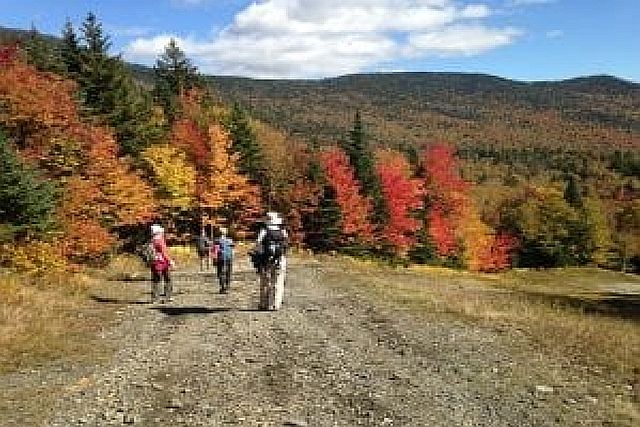 |
The seaside village of Amalfi along the breathtaking Amalfi Coast
(Photo:Taylor) |
ITALY — The Magellan Travel Club is offering a deluxe tour of Italy
in the spring of 2020 in honor of its 11th anniversary.
The
itinerary includes accommodations in three of Italy's
most popular 5-star hotels; Hotel Bernini (Florence),
Hotel Santa Caterina (Amalfi) and The Hassler (Rome). Also included in the 11 day adventure
are three lunches and two dinners prepared in four of Italy's finest kitchens in indescribable settings in Amalfi, Positano,
Ravello and Rome.
Guided
tours are part of the package in Florence, the
Chianti country of Tuscany and Pompeii. If time permits,
we may also arrange a tour of the Sistine Chapel as well as St. Peter's
Basilica.
 |
Ancient street in Pompeii
(Photo: Taylor) |
In
addition, participants will enjoy day excursions to Positano, Ravello, Capri and La Posta Vecchia, the former villa of John Paul
Getty. Yet with all of those activities, there will still be ample free time
for individual sightseeing, shopping and, of course, relaxing.
How is
it possible to do so much, and still have free time leftover? Simple. It's all
a matter of planning, experience and knowledge of the destination. Add a group
of enthusiastic, flexible and compatible travelers to the mix and you have a
sure-fire once-in-a-lifetime travel experience filled memories you'll never
forget.
The tour
begins with a motorcoach transfer from Rome's Fiumincino Airport
to Florence, the city of Michelangelo.
 |
The earthtones of Florence at twilight
(Courtesy: visitflorence.com) |
Though a
bus transfer takes a little more time than the hour and a half journey by high
speed train from Rome,
it eliminates the hassle of jet-lagged travelers schlepping their luggage to
connect to a means of transportation that is unsuited for dealing with the
multiple bags of group travel.
Arriving
in Florence in
mid-afternoon, we check-in to Hotel Bernini, rated one of ten best lodging
establishments in the city. The remainder of the day is free for
self-orientation.
*TIP: Stay awake, if possible,
eat a light early dinner and retire about 8:30 or 9:00 pm. You'll sleep like a
baby and awaken refreshed and with no jet-lag after effects.
All
breakfasts are included, so fill up at the buffet before heading on a guided
morning walking tour.
 |
Michelangelo's David, Florence
(Photo: Taylor) |
*TIP: A guide is always a better
way to do sightseeing, especially on a first visit to a destination and if you
are traveling with a group where you can share the costs. Professional guides
are licensed and will keep you on schedule without losing time by being
disoriented. They are also knowledgeable so that many of your questions can
answered immediately. Best of all, guides have the authority to bypass lines,
which is a huge time-saver over independent travel.
The afternoon
is free for personal exploration and shopping.
For shoppers
in Florence, we
suggest looking for leather.
Recommended
sightseeing are stops at the Pitti Palace and Boboli Gardens, the Brancacci
Chapel and the little known Officina Profumo-Farmaceutica di Santa Maria Novella (Pharmacy
of Santa Maria Novella).
 |
Dusk on the Arno River and the Ponte Vecchio
(Courtesy: visitflorence.com) |
At
twilight, go across the Arno
River for a relaxing
drink before dinner at Piazzale Michelangelo. Here you can view ever-changing
patterns of earthtones and mist at sunset.
But the
adventure has only just begun.
Day two
includes a guided motorcoach tour into Chianti country for a wine tasting or
two and visits to some popular Tuscan villages such San Gimignano which was
featured in the 1999 movie Tea with
Mussolini.
 |
Hotel Santa Caterina, Amalfi
(Photo: Taylor) |
Now that
we are savvy, rested travelers, it's time to tackle the Italian high speed rail
system which will whisk us through Rome and on to the main railway station in
Naples where will be picked up and transferred by coach to the delightfully
friendly ambiance of the 5-star Hotel Santa Caterina in Amalfi.
Here is
where we immerse ourselves into all things lemon, including the popular local
drink known as limoncello.
*WARNING: Amalfi is addictive, as
is our hotel. You may never want to leave! We assume no responsibility.
 |
Stairway to paradise in Amalfi
(Photo: Taylor) |
After a
free afternoon of exploring Amalfi and Santa Caterina on your own, we suggest
you rise early for a spectacular included breakfast buffet on the veranda with
a perpetual face toward the sea thanks to its southern exposure.
We then
take a boat to Positano and disembark for shopping and browsing through narrow
streets and alleyways filled galleries and boutiques.
The once
sleepy fishing village now thrives with energy after author John Steinbeck fell
under its mesmerizing spell and wrote about it.
 |
Positano as seen from Hotel San Pietro
(Courtesy: ilsanpietro.it) |
Steinbeck
wasn't the only celebrity to become enraptured by the hypnotic allure of the Amalfi Coast.
So too, did Greta Garbo, Gore Vidal, D.H. Lawrence, Richard Wagner, Brad and
Angelina and Richard Burton and Elizabeth Taylor among dozens of other
international celebrities.
Hillary
and Chelsea Clinton even "roughed it" one night when they stayed at
Santa Caterina.
 |
San Pietro is almost invisible unless you know where to look
(Courtesy: ilsanpietro.it) |
Our
included lunch will be at the spectacular invisible Hotel San Pietro, just a
mile and a half down the coast from Positano.
San
Pietro is recessed into the rock, making it almost "invisible" from
either the road or the sea, unless you know where to look.
After a
breathtaking mid-afternoon transfer back to Amalfi along the coastal road, the
remainder of the day is free for a swim in the pool, a nap or a stroll through
the hotel's lemon groves.
 |
Vesuvius destroyed Pompeii in
79 A.D. (Photo: Taylor) |
The
following day includes a guided walking tour of the ruins of Pompeii. Note, Pompeii is quite large, so don't expect to
see it all. It will also be about ten degrees warmer than Amalfi.
Upon our
return, head to the village for shopping and/or gelato or just chill out at the
hotel before enjoying the first of two included dinners at our hotel.
Ravello,
with its stunning views and pair of villas, Ruffalo and Cimbrone, are next on
the agenda. Stay as long as you like and return to Amalfi at your leisure.
 |
Lunch at Hotel Palumbo, Ravello
(Courtesy: hotelpalumbo.it) |
Lunch is
included at Hotel Palumbo, a one-time medieval palace dating to the 12th
century. Believe it or not, the views from Palumbo are among the most stunning on
the Amalfi Coast. Also be sure to thumb through the
pages of the guest book -- you may never wash your hands again.
*TIP: Upon arriving in the main square of Ravello, most people turn left to stroll
past shop after shop of ceramics. Unless you take time to visit Vietri, Ravello
is the best place for ceramics. That said, we suggest that you walk in the
other direction as well. Many visitors do not, and shoppers miss some of the
best bargains and highest quality ceramics in town. Sightseers also risk bypassing
some of the most majestic scenery along
the Amalfi Coast.
Our last
day in Amalfi includes an optional full day boat excursion to Capri,
once the decadent playground of many Roman emperors. Caligula, in particular.
 |
Harbor at Capri
(Photo: Taylor) |
Today, Capri is a home for decadent shopping instead.
Non-shoppers may want to visit the famed Blue Grotto. We also suggest that you
also take the local bus up to Anacapri, the highest point on the island.
Those
who stay back can enjoy the hotel, do last minute shopping or ride along the
coast to Atrani for ceramics or Vietri for tiles.
Tonight
we enjoy a scrumptious included four-course farewell dinner at the hotel.
If you
can tear yourself away, we have an early morning transfer to Naples
where catch the high speed train to Rome.
 |
Hotel Hassler at the top of the Spanish Steps is our home in Rome
(Courtesy: hotelhasslerroma.com) |
Our last
hotel is the Hassler, which is to Rome what the
Waldorf-Astoria is to New York.
The Hassler however, sits at the top of the Spanish Steps.
The
reason for leaving Amalfi early is to allow as much free time as possible to
explore Rome on
your own.
*TIP: Since dinners in Rome are on your own, we
recommend doing at least one of them in Trastevere. Situated on the other side
of the Arno River, this is the place where locals
hang out. Just ask the concierge for a suggestion or two.
 |
Farewell lunch at La Posta Vecchia, once John Paul Getty's villa
(Courtesy: pellicanohotels.com) |
Our
final outing is a short bus trip to the former villa of John Paul Getty. Getty
discovered and excavated ancient Roman ruins beneath the floor of La Posta
Vecchia (Old Post Office), thereby literally turning his home into a museum.
 |
Ruins dating to Julius Caesar
(Courtesy: pellicanohotels.com) |
We are
able to browse the grounds before and after our included lunch prior to
returning to Rome
for last minute shopping and dinner.
Today,
we say Arrivederci to Italy,
knowing full-well you will return even if you didn't toss a coin into Trevi
Fountain.
 |
Indoor pool at La Posta Vecchia
(Courtesy: pellicanohotels.com) |
Space is
limited and deposits of $500 per person are due by Friday September 20 since
any uncommited rooms must be released.
Even old
Magellan would have enjoyed this trip enough that he might never have gone
round the world either.















































